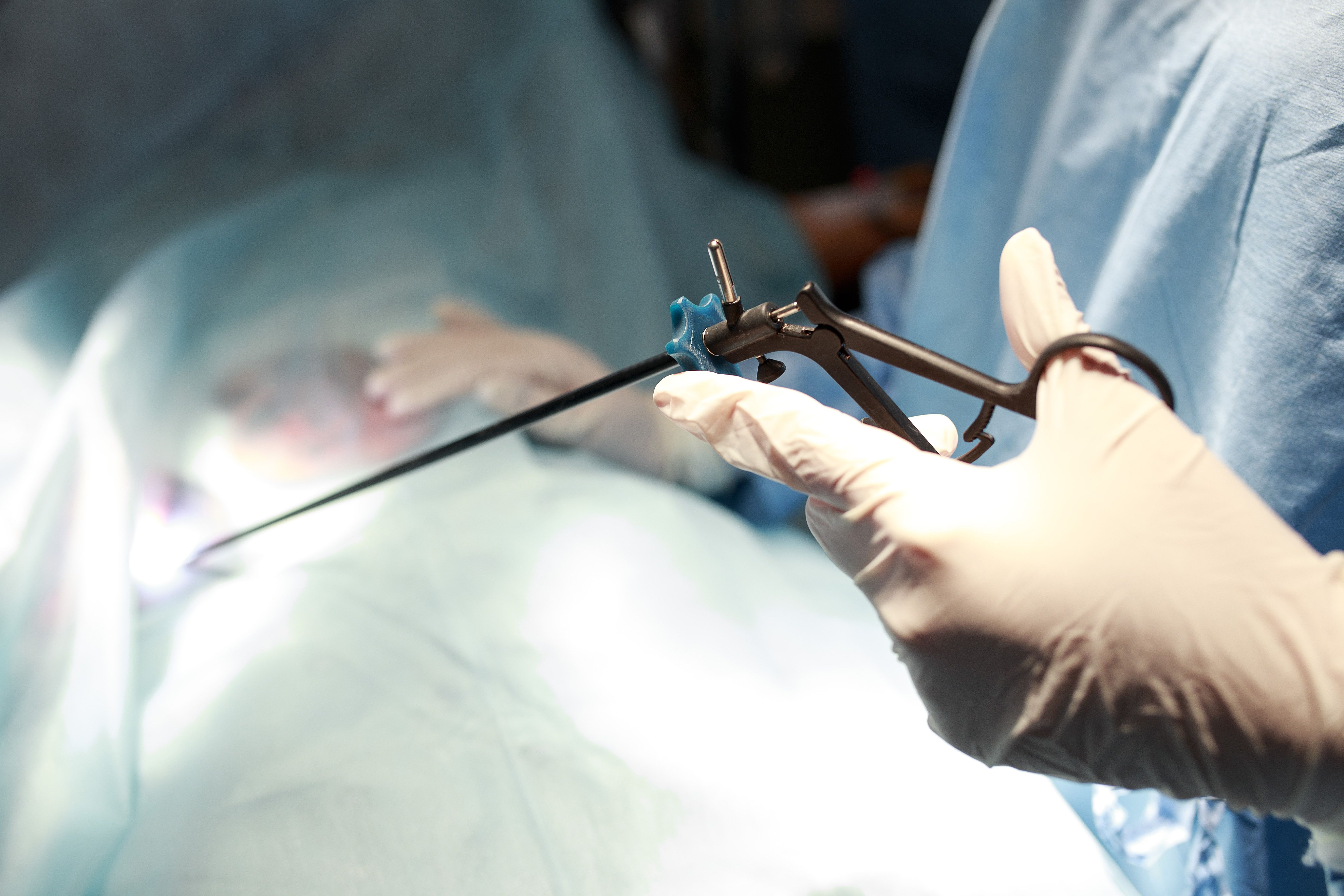Surgical anesthesia and postop outcomes of laparoscopic excision of endometriosis
Researchers compared LTAP and LAI to determine which is more effective in postoperative pain management.
©skvalval - stock.adobe.com

There is no difference in effect between laparoscopically guided transverses abdominis plane block (LTAP) and port-site local anesthetic infiltration (LAI) for laparoscopic excision of endometriosis, according to a study in BJOG. The double-blind, randomized, placebo-controlled trial was conducted at a tertiary referral center for endometriosis and minimally invasive gynecological surgery in Tehran, Iran.
The 70 participants, who underwent laparoscopic excision of endometriosis between December 2015 and July 2016, were randomized to one of three groups: LAI with bupivacaine and placebo LTAP (the LAI group, n = 21); placebo LAI and non-placebo LTAP with bupivacaine (the LTAP group, n = 24); and placebo LAI and placebo LTAP (the placebo group, n = 25).
The major outcome measures were postoperative pain at 2 to 4 hours, 6 to 8 hours, 10 to 12 hours and at 24 hours, as well as analgesic requirements, TAP block-related complications and opioid-related adverse events (AEs).
Compared to placebo, both the LTAP group and the LAI group achieved significantly less pain at 2 to 4 hours postop: median 3 on the 10-point verbal numerical rating scale (VNRS) for LTAP, 3 for LAI and 8 for placebo. Similar findings were for 6 to 8 hours (3, 6 and 8, respectively) and for 10 to 12 hours (3.5, 4 and 7, respectively).
The median differences for LTAP versus placebo, with 95% confidence intervals, were -5 (-6 to -4), -4 (-5 to -3) and -3 (-4 to -0.5) for the three time points, respectively. For LAI versus placebo, the median differences, again with 95% confidence intervals, were -4 (-5 to -2), -2 (-3 to -0.5) and -1 (-4 to -0.5), respectively.
Overall, there were no statistically significant differences in pain scores between the LTAP group and the LAI group. The LTAP group achieved dramatically less pain postoperatively compared to placebo at all time points, including 24 hours, but for the LAI group, the difference was statistically significant only for the first three time points.
The study also found that total diclofenac requirements during the first 24 postop hours were dramatically lower for the LTAP and LAI groups versus placebo (P= 0.005). Total morphine requirements were also significantly lower in the LTAP group compared to placebo (P= 0.025), but not in the LAI group versus placebo (P= 0.242). Moreover, a patient’s first request for diclofenac was not until a median of 7 hours postop in the LTAP group, compared to 5 hours for the LAI group and 2 hours for the placebo group. However, the time to first patient request for morphine did not significantly differ among the three groups.
Analgesic requirements and time of first request for analgesia were also similar for the LAI group and the LTAP group. Likewise, reported nausea and incidence of vomiting postop did not vary meaningfully between the three groups and there were no serious AEs.
“Our findings further suggest that LTAP is safe, easy to perform, and provides an analgesic effect that covers at least the first 24 postoperative hours in the setting of gynecological laparoscopic surgery,” the writers wrote, adding that LTAP did not need any additional equipment or training. Due to time and resource limitations, though, the study had fewer participants than preferred, which would have allowed for greater power and precision and might have detected smaller differences between the two techniques.
Addressing mental health risks in endometriosis patients
December 10th 2024A new study underscores the critical need for gynecologists and mental health professionals to collaborate in managing anxiety, depression, and sexual dysfunction in women with endometriosis, driven by chronic pain and related comorbidities.
Read More
Study finds high rates of incidental MRI findings in endometriosis cases
October 29th 2024A recent study highlights the frequent occurrence of incidental findings on pelvic magnetic resonance imaging for endometriosis, emphasizing the need for radiologists to focus on those with higher clinical significance.
Read More
